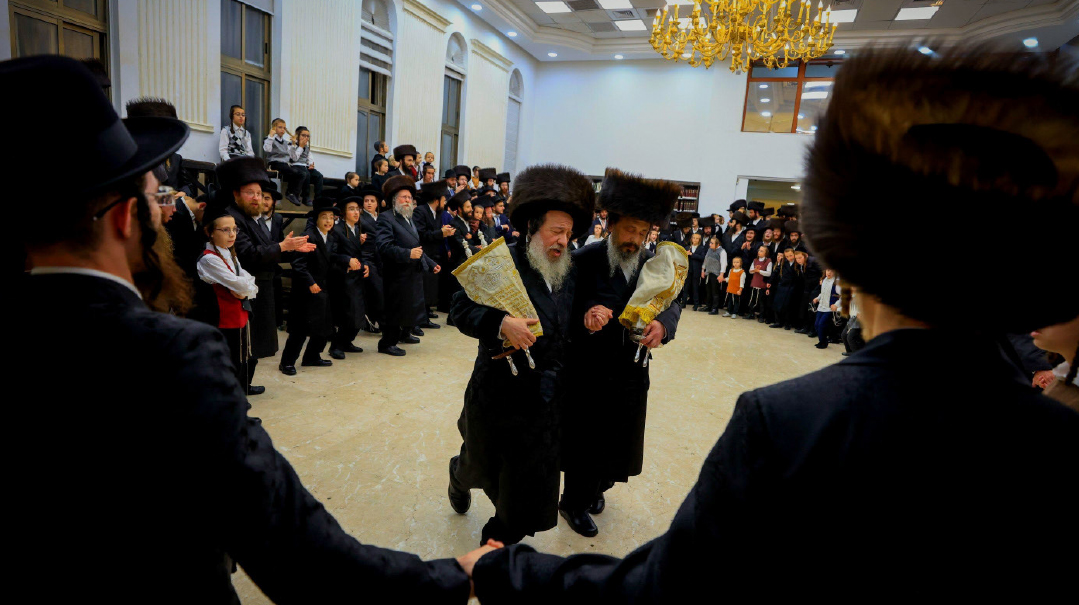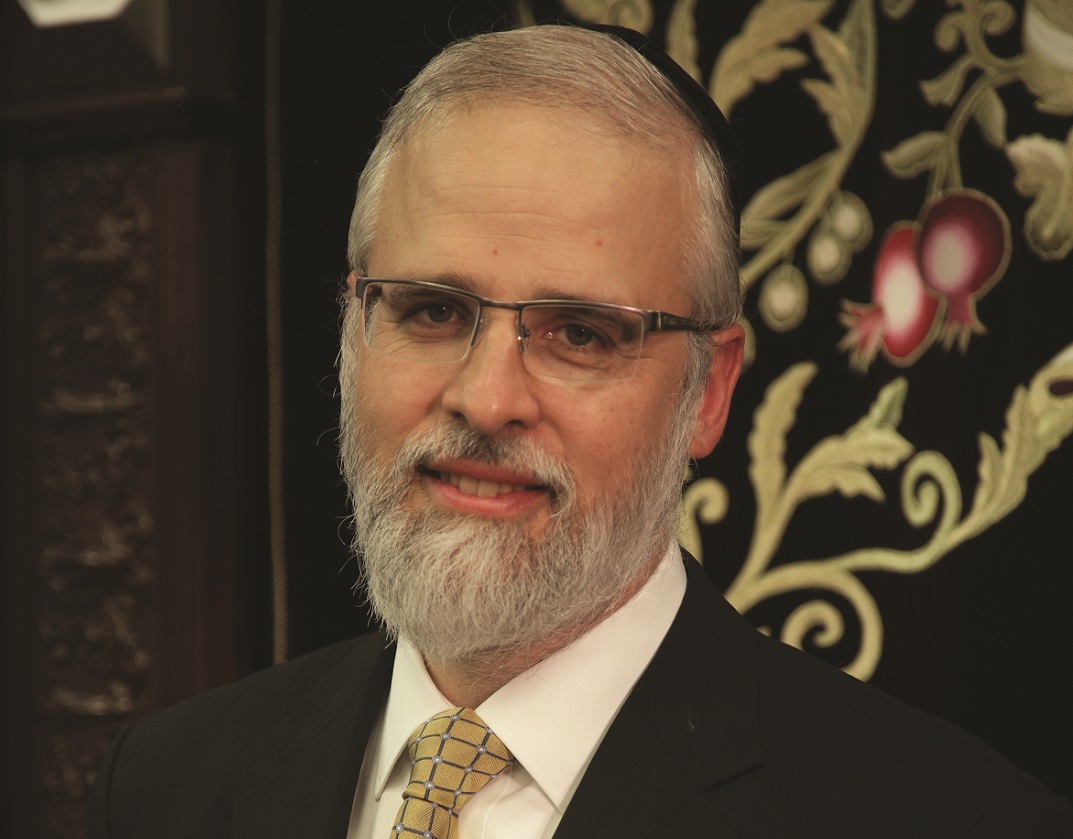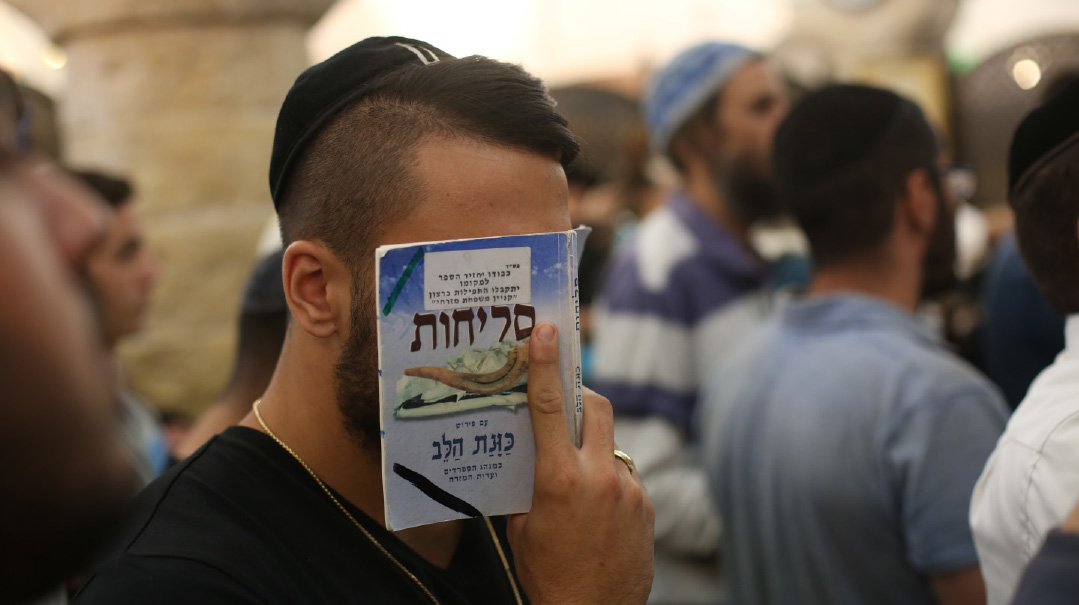Doubling Down on Simchas Torah

Given what happened last year and since — can our observance of this day remain unchanged?

PHOTO: OLIVIER FITOUSSI/FLASH90
How shall we celebrate this Simchas Torah? Halachah does not allow us to mourn on Yom Tov, but — given what happened last year and since — can our observance of this day remain unchanged? While we cannot allow the attacks to suspend Jewish life, and Simchas Torah’s joyous acknowledgment of the gift of Torah remains an invaluable source of inspiration for us from year to year, how can we possibly conduct our festivities as usual?
Let us sharpen the question. This Simchas Torah, there will be two kinds of Jews — those for whom celebration will require enormous willpower, gevuras hanefesh, and those for whom it will be relatively easy.
For the residents of the Gaza Envelope and Sderot, the families of hostages and of soldiers who have been on the front lines all year, and for many others, the celebration of Simchas Torah will inevitably stir up feelings of deep grief and distress. But many of them will nevertheless engage in yet another act of heroism as they find a place for those feelings while celebrating the Yom Tov l’Sheim Shamayim. Their achievement will be celebrating an apparently normal Simchas Torah when everything else in their lives has changed after October 7.
But what about the rest of us? For those who have been largely insulated from the depth of the tragedy, who have experienced it via news reports, calls with relatives, and solidarity visits, but not deeply and personally, al besareinu, the task is entirely different. Though we have been deeply concerned and engaged in tefillah and acts of tzedakah and chesed, we have lived more or less as usual despite the ongoing war.
If we are honest with ourselves, dancing and celebrating Simchas Torah will be less of a struggle than it should be, and it may reinforce our distance from those on the front lines, acheinu hanesunim b’tzarah uv’shivyah. It is we who must ask ourselves — can we possibly continue as usual? How can we celebrate this Simchas Torah in a way that does not gloss over the experience of this past year?
The answer lies in those hakafos themselves, in the conscious effort we invest to “lean in” and make the hakafos serve not as an escape but as the means to connect deeply to the events and challenges of this past year, bringing to life the feelings and ideals that we most need to strengthen.
Ideals are usually not powerful enough to traverse the transformative distance between the head and the heart. For that, we must engage our emotions, and one of the most effective ways to achieve that is via the vehicle of niggun, repeatedly singing together with others a phrase or a sentence that expresses a core ideal until it becomes a part of us.
Here are two of the core ideals that we can reinforce as we celebrate Simchas Torah in the shadows of the past year.
The Circle of Connection
Throughout Succos, we form human circles — whether for the hoshanos, for the celebration of Simchas Beis Hashoeivah, or for the ultimate celebration of Simchas Torah hakafos.
The Netziv (Ha’amek Davar, Devarim 16:15) suggested that this practice fulfills the Torah’s description of Succos as chag, a term that can mean both “festival”’ and “circle” (see Chagigah 10b).
The circle of dance is central to this festival of asif (ingathering) that is rich with allusions to the unity of all types of Jews (the arba minim bound together, the shared dance of the tzaddikim and baalei teshuvah at the Simchas Beis Hashoeivah) and that brought together the Jewish People in Yerushalayim k’ish echad for the climactic aliyah l’regel. The circle unites all its points, with no beginning and no end and with all equidistant from the center. Thus, a joyous circle of dance tangibly fosters a sense of connection to all who join it.
Who should be part of that circle of connection? Succos is the Yom Tov of invisible guests, the Ushpizin. This Simchas Torah we can consciously, explicitly, and conceptually broaden the orbit of our dance, figuratively inviting into the circle those physically and ideologically far from us whose lives were upended by the massacre of last Simchas Torah and its aftermath. We can dance “V’shavu Vanim L’gvulam” with the families of the hostages and the displaced; “Hoshia es Amecha” and “Tzaveh Yeshuos Yaakov” with the soldiers and their families; and “Hinei Mah Tov” with those from whom we are religiously and politically distant.
We can also pause the dancing for a bit and sit in a kumzitz circle to express our concern for acheinu kol beis Yisrael, our awareness of the chronic anti-Semitism of vehi she’amdah, and our ani maamin that all this will culminate b’vias haMashiach.
Rather than escaping October 7 with platitudes of “we cannot let the terrorists take away our Simchas Torah,” these circles of song and dance will become the means for us to strengthen and deepen our connection to those on the front lines and to events and experiences from which we may be otherwise somewhat detached.
The Light of Torah
There have been incalculable human and national costs resulting from the massacre of last Simchas Torah and its aftermath, including death, captivity, injury, destruction, displacement, and an elevated sense of danger for Jews everywhere.
But these constitute only one part of the tragedy. Chazal (Sanhedrin 103b, 110a) record Hashem’s reproach of Klal Yisrael when we limit our concern to the damage inflicted upon ourselves and are insufficiently troubled by the damage done to Hashem’s honor. Lichvodchem mechisem, lichvodi lo mechisem.
Klal Yisrael is a community of values. Our mission since Avraham has been to be mekadesh Sheim Shamayim in the world by teaching and modeling both faith in Hashem and halichah b’drachav, applying Hashem’s middos in our own interactions with other. That continues to this day, as despite the centuries of persecution, the Holocaust, and the constant existential treats we face, we refuse to turn bitterly inward and remain committed to being a source of brachah for the world.
Nevertheless, the twisted narrative promoted in academia, the media, progressive spaces, and international governmental and judicial forums, has cast the Jewish People everywhere and our moral and holy army of selfless soldiers as genocidal, oppressive, and hateful, radically increasing the physical threats of anti-Semitic violence facing Jews everywhere, but — even more perniciously — reducing our ability to achieve our core mission of being mekadesh Sheim Shamayim, even making many Jews feel the need to hide their Jewish identity.
Simchas Torah, the day this nightmare began, is when we rejoice in our truth and morality and in the gift of Hashem’s Torah. Carrying our children on our shoulders and sifrei Torah in our arms, we sing and dance in joyous celebration of Torah, emunah, and mesorah, and the values that define us. The words — the value statements — that we sing repeatedly express our deep appreciation for our good fortune to continue the mission of Klal Yisrael to do good, to be good, to study and live by Hashem’s word, and to bring light to the world.
Toras Hashem temimah, meshivas nafesh — Hashem’s Torah is perfect, restoring the soul. Baruch Hu Elokeinu she’bera’anu lichvodo v’hivdilanu min hato’im — Blessed is our G-d Who created us to bring Him honor, distinguishing us from those who are ethically lost. That is our response to those who speak in the name of justice, humanitarianism, and civil rights while denying the morality of Klal Yisrael.
We remind ourselves of who we are as we sing with the Torah, dance with the Torah, and conclude the reading of the Torah, only to immediately begin it again, demonstrating that we are the nation defined by our relationship to the Torah and its eternal truths.
So how shall we celebrate Simchas Torah this year? We will not ignore this past year for even a moment. Instead, we will deepen our appreciation for acheinu kol beis Yisrael, the heroes on the front lines and those whose lives have been upended, and our feeling of privilege — ashreinu, mah tov chelkeinu — for having been given the incomparable gift of Torah. We will draw strength from who we are as a nation, from the care that we provide each other, and from living the Torah’s values. Utzu eitzah v’sufar dabru davar v’lom yakum, ki imanu Keil.
Rabbi Moshe Hauer serves as the executive vice president of the Orthodox Union.
(Originally featured in Mishpacha, Issue 1033)
Oops! We could not locate your form.





